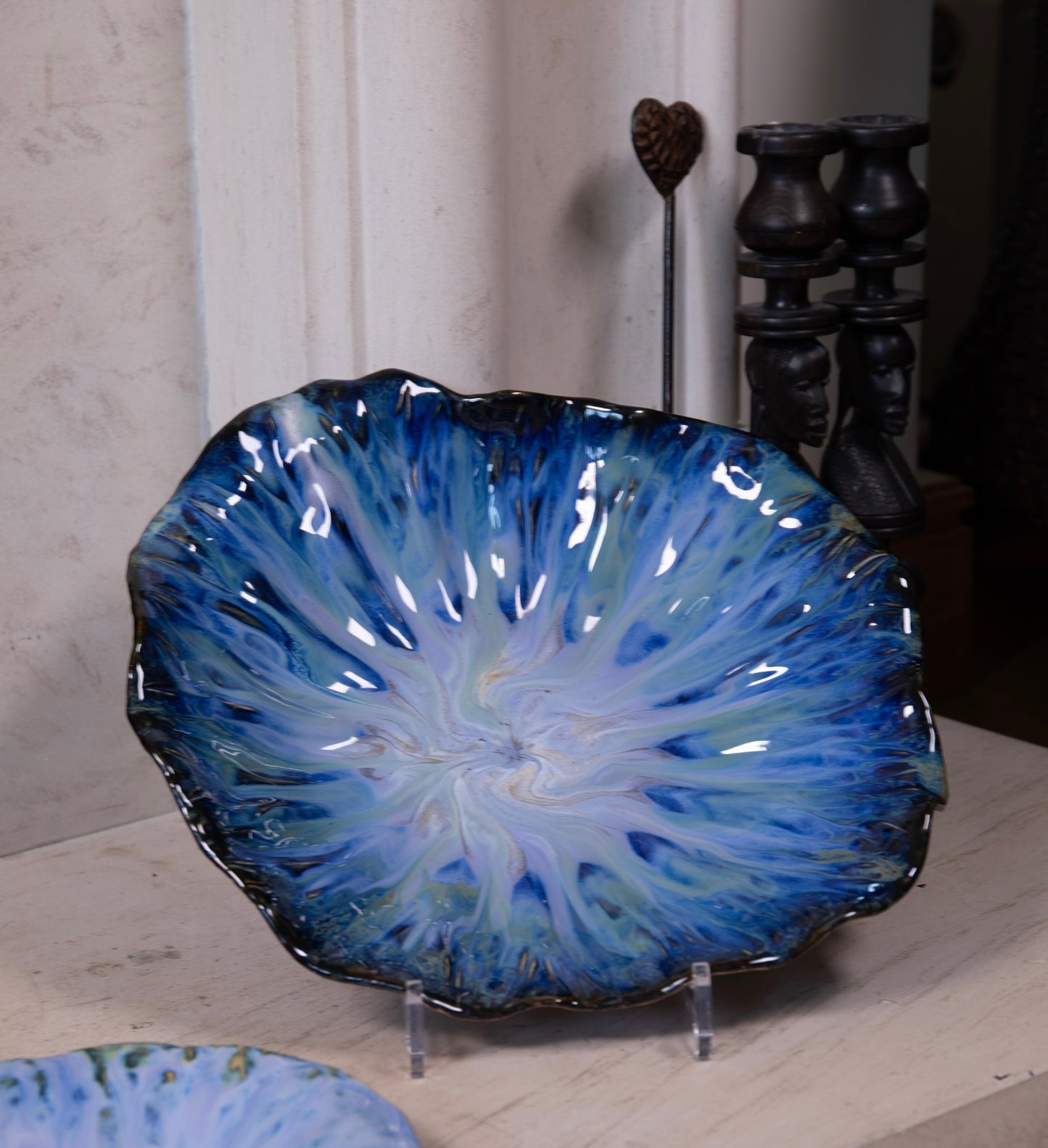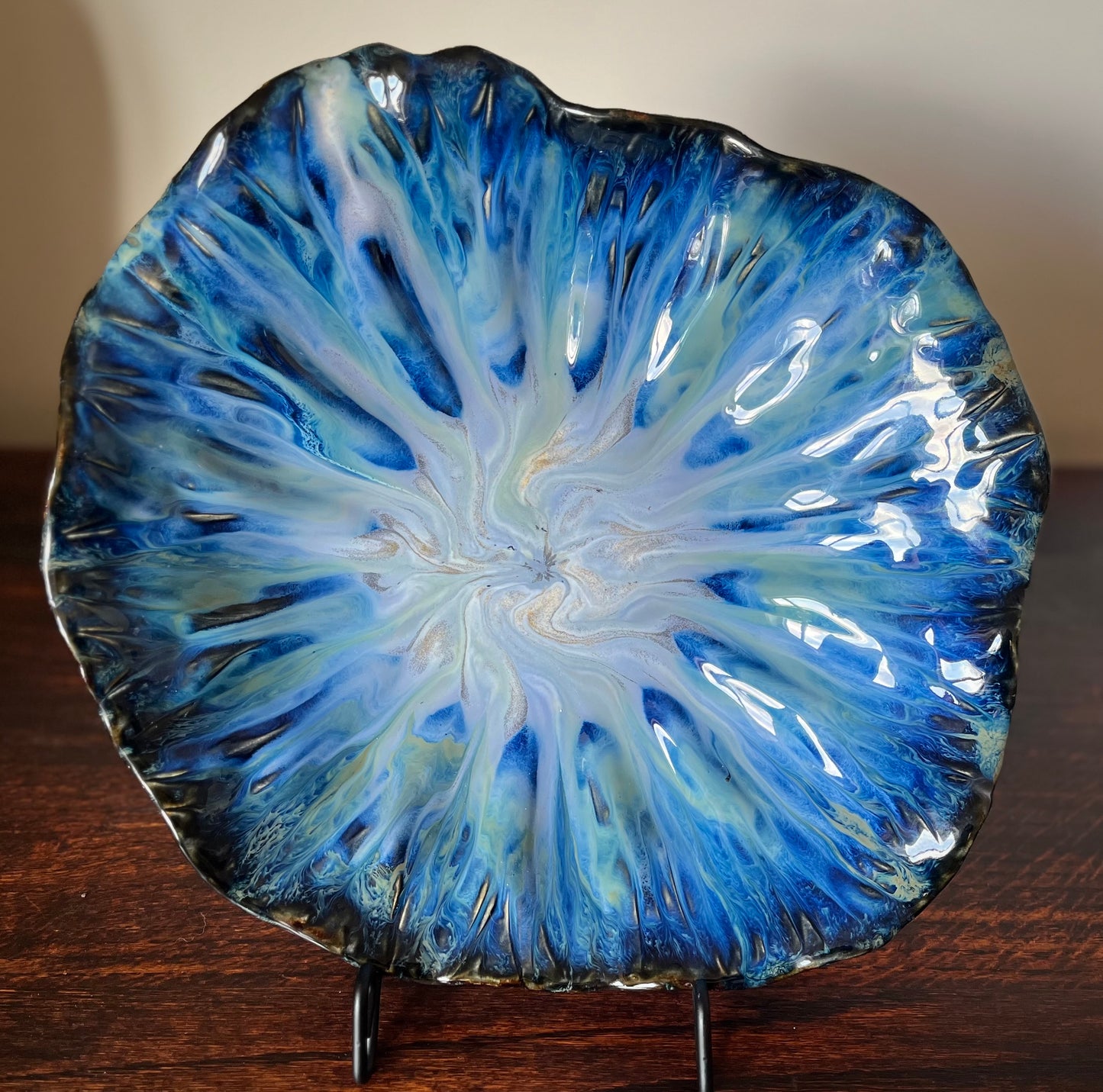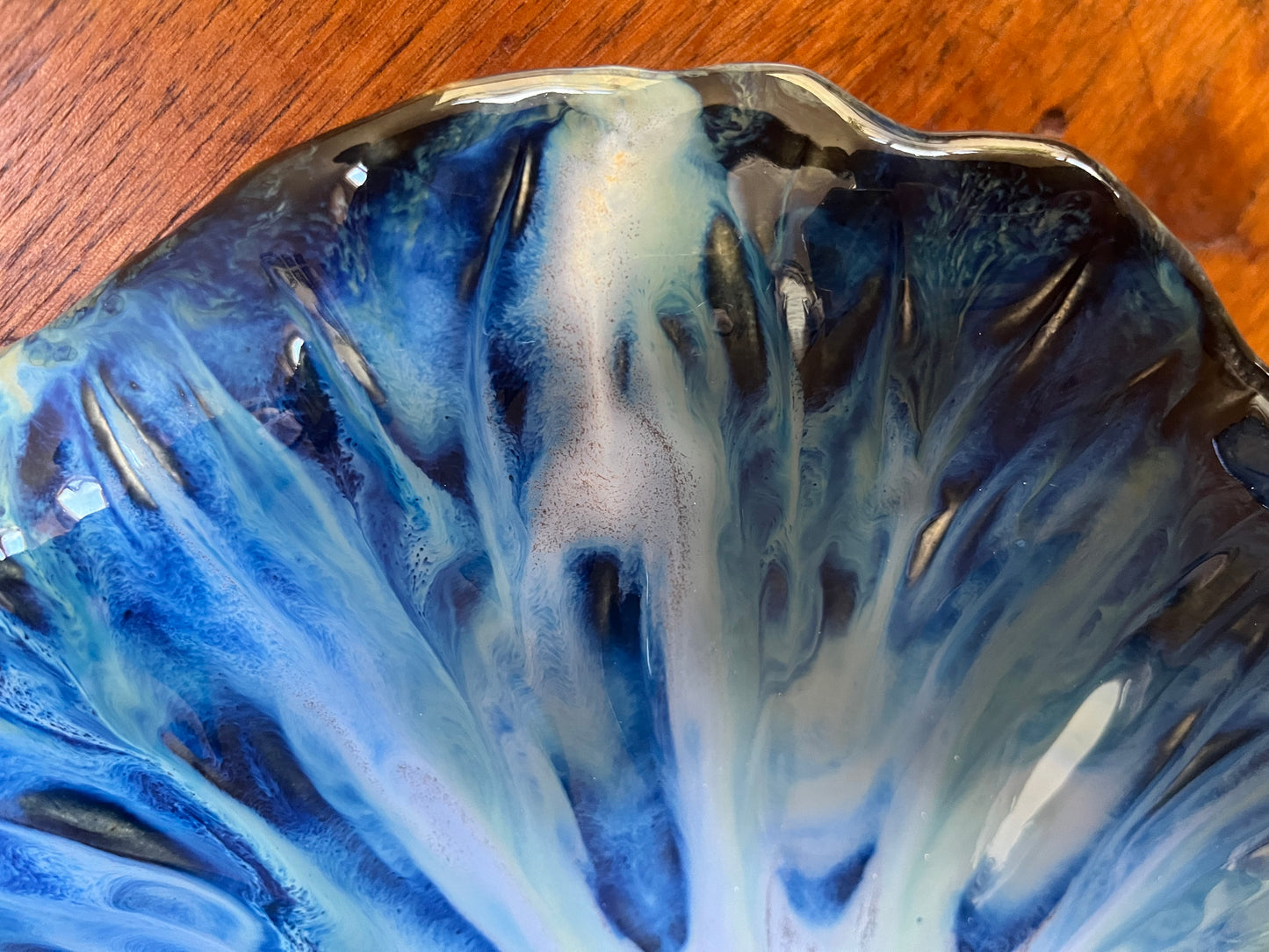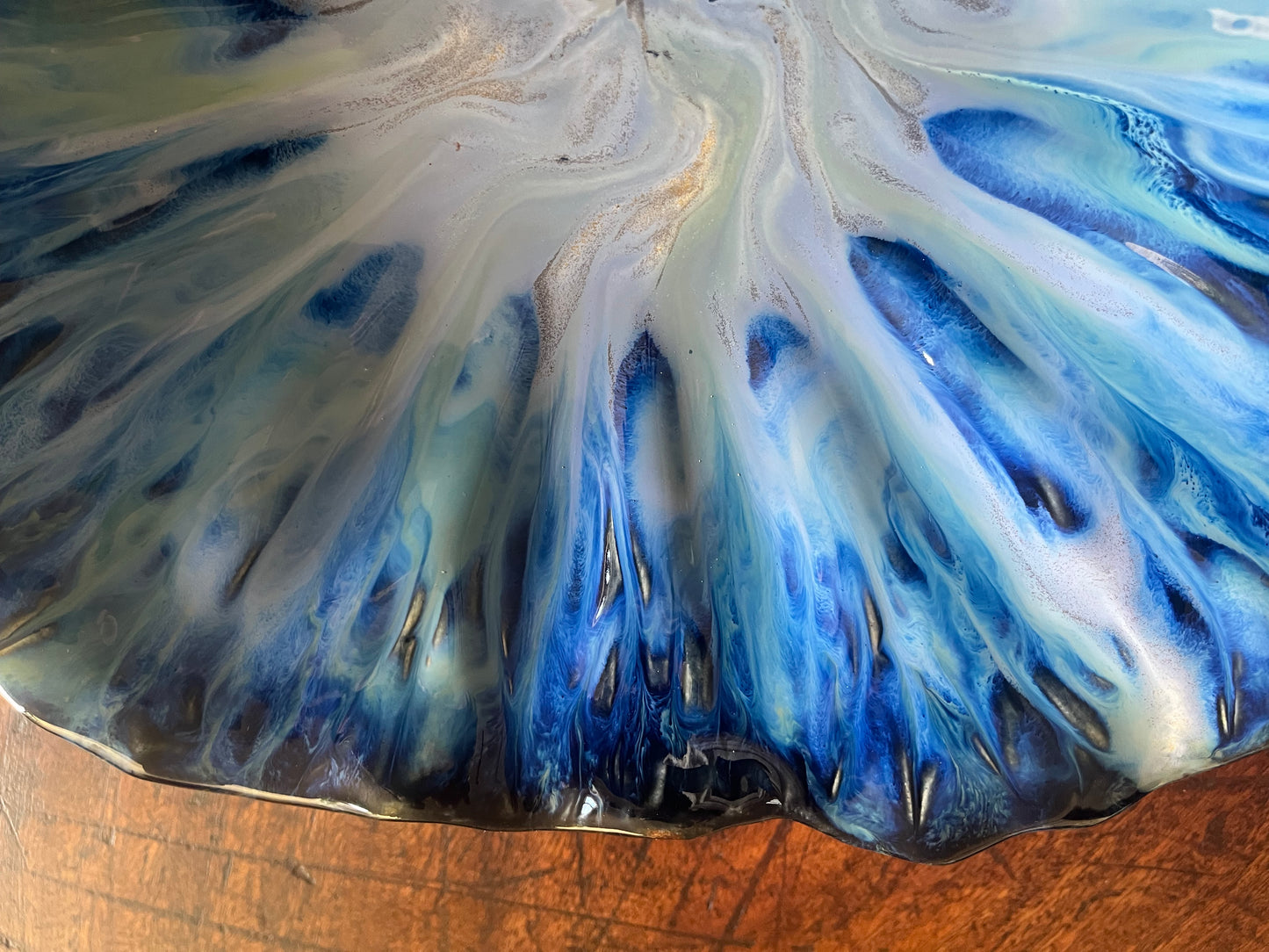Head on a Platter
Extra large blues flow bowl with soft waves edge
Extra large blues flow bowl with soft waves edge
Couldn't load pickup availability
Spectacular handbuilt stoneware bowl - a truly one-of-a-kind centrepiece.
Built using a combination of slabs and coils for creating the form, with carving for texture, this one was more than worth the almost 2 month wait for it to dry very slowly.
I was asked to add a bit of the journey from bag-of-clay to final piece, but be warned - I'm rather passionate about the whole thing. 😁
First though, quick practicalities:
Food, microwave and dishwasher safe
Approximate* dimensions (length x width x height):
32.5 cm x 31 cm x 6 cm
* due to the nature of handmade ceramics, measurements can differ up to 2cm
Now, grab that cup of tea, and join me!
The first step in this creation was to design a piece that is not only dramatic, but that would combine my love of reactive glazes, the flow and strength of water and waves, and something which also represents the start of a new season - a flower opening, joining the warmer, brighter weather all around. Not asking much from my pencil and sketchbook, then...
And yet, nature will not be held back, ever. So as rocks broke down, weathering over long, long periods to slowly start changing into clay, the processed clays are yet again ready for a new beginning. The potential to become all the things I'm dreaming it to be.
And here started the wonderful stage where I was lucky enough to join, to create that special piece:
After wedging the clay to ensure particles are better aligned and the consistency even, it is rolled out by hand into a big circular slab. When the bowl is deep and wide, I prefer to the drape it over a handmade plaster mould to absorb some moisture, allowing the clay to firm up slowly. Once stable enough to keep its shape, it can be removed from the mould, I form coils with wet clay, and I attach them one layer at a time. This allows me flexibility with the rim, to create that organic feel. This can take some time, but is quite a meditative process, which I love.
A couple of days later, I add some carvings on the inside to highlight the reactive glazes' effects, ensure the rim is smooth, create the texture for the contrasting underside, and my bowl is ready for the slow dry over some weeks. Loosely wrapped clingfilm on the rim edges helps reduce the risk of cracking as the water evaporates before kiln firings.
Next step is the slow bisque fire to 1000C. In the kiln for at least 24hrs, the fragile clay is transformed into a stronger mid-way form. Not yet vitrified, so stronger, but still porous enough to be glazed.
Next step: Glazing. I layer reactive glazes - up to 9 layers of different thicknesses. Some brushed, some dripped, some blobbed on. For contrast, I then use iron oxide wash on the bottom of the piece over the texture I created at the start. A day later it goes into the glaze fire kiln. With stoneware clay and the cone 6 reactive glazes I use most of the time, this is fired to 1220C. A long 48 hours in the kiln this time (well, long if you're as impatient to wait for Christmas as I am since age 5 anyway...)
And finally, the once soft, mouldable mud is transformed into a type of glass. Strong, impermeable by water, and in the case of this piece and others I create in a similar manner and when using the same materials, food safe. To display, to use, or both.
And here you have it - the story of stone to glass, and all the fun bits in-between. ❤️
If you ever want to see any of this in person, contact me and we'll arrange it. I'll even sort the tea!
Share
















